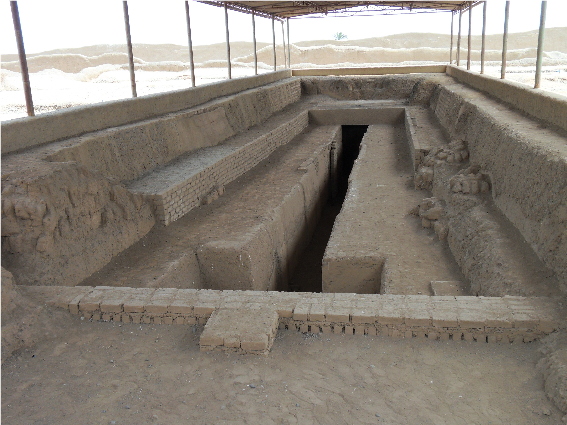Peru
Chan Chan
The archaeological site of Chan Chan is located near the Pacific coast, close to the city of Trujillo in Northern Peru. Covering an area of 36 square miles, the city was the centre of government for the Chimú kingdom. The Chimú, which developed from the Moche, were to become the prominent civilisation in the region from around 850 to 1470 AD until they were subdued by the Inca.
The Chimú’s economy was based on agriculture, which, due to the dry region, required a sophisticated network of irrigation canals and wells. They developed and constructed systems for irrigation that were not known in Europe until the late 19th century.
The Empire of the Chimú stretched 600 miles from just south of Ecuador down to central Peru. Their main city, Chan Chan, which means "Sun Sun" it is the largest pre-Colombian city in South America. Constructed of adobe (mud bricks) it is the largest adobe city in the world with some 10,000 structures and is believed to have housed over 60,000 people.
There are a number of areas in Chan Chan, but the main one and only one open to visitors is the Tschudi Citadel , which is believed to be one of the later citadels built in the city. Named after the archaeologist who studied the complex, it is possible that it housed up to 1000 people connected to the leader’s household and administrative requirements.
The city’s structure shows the social and political status of its occupants, with the nobility and elite living in the centre, whilst the common people would have had their homes and work place outside; probably not even being able to enter the city. Composed of ten citadels, each of which is surrounded by walls as high as 30 feet, each citadel belonged to a specific ruler. When the ruler died, he was buried in the palace and a new royal compound was built by his successor. Each ruler would be buried with gold and silver and many people to attend to him in the afterlife. Although only ten citadels have been found due to the fact that each would have their own citadel and the length of time that they habited Chan Chan, it is quite possible that a number of other citadels have still to be uncovered.
Also to be seen in the city are living quarters, ramps (there are no stairs in the city), plazas, gardens, streets and alleyways, workshops, warehouses, a large reservoir, and temples decorated with elaborate friezes - many of which show geometric figures, birds, fish, and mythological creatures and can stretch for hundreds of feet - all of which are surrounded by thick defensive walls.
Excavation work at the site began in the mid-1960s and Chan Chan became a UNESCO World Heritage Site in 1986; although it is still vulnerable to rains, flooding and earthquakes, which emphasises the urgency of the work that is being carried out in order to preserve and renovate it. Due to the deterioration of the adobe most of the site is in poor condition and many of the buildings have been reconstructed with the carved wall reliefs being reconstructed in fibre glass and plastic.




To see more photographs and take a virtual tour of the site click on the photoshow below.
